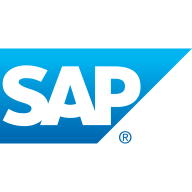

Microsoft .NET Framework and SAP NetWeaver Enterprise Portal are two platforms competing to enhance enterprise application capabilities. Microsoft .NET Framework often appears superior in pricing and support, while SAP NetWeaver Enterprise Portal is noted for its comprehensive features that justify its cost.
Features: Microsoft .NET Framework features an integrated development environment, cross-platform capabilities, and suitability for creating dynamic web apps and services. SAP NetWeaver Enterprise Portal provides tools for collaborative workspace creation, seamless integration of diverse applications, and extensive enterprise solutions.
Ease of Deployment and Customer Service: Microsoft .NET Framework is known for a straightforward setup, supported by strong documentation that enhances deployment. SAP NetWeaver Enterprise Portal requires detailed implementation best handled by experts, with notable customer service support for complex integrations.
Pricing and ROI: Microsoft .NET Framework offers a cost-effective initial setup with significant long-term ROI owing to a lower entry barrier. SAP NetWeaver Enterprise Portal demands a higher initial investment but promises greater ROI from its feature-rich offerings and integration capabilities, which often justifies its cost for comprehensive enterprise solutions.
| Product | Market Share (%) |
|---|---|
| Microsoft .NET Framework | 5.4% |
| SAP NetWeaver Enterprise Portal | 1.7% |
| Other | 92.9% |


| Company Size | Count |
|---|---|
| Small Business | 28 |
| Midsize Enterprise | 9 |
| Large Enterprise | 23 |
Microsoft .NET Framework is a software development framework for building and running applications for Windows, Windows Phone, Windows servers, XML Web services, and Microsoft Azure. The software is made up of two major components: Common Language Runtime (CLR) and the .NET Framework Class Library. The CLR is the execution engine that handles running apps and the Class Library is a library of tested, reusable code that developers can call from their own apps.
Microsoft .NET Framework Features
Microsoft .NET Framework has many valuable key features. Some of the most useful ones include:
Microsoft .NET Framework Benefits
There are many benefits to implementing Microsoft .NET Framework. Some of the biggest advantages the solution offers include:
Reviews from Real Users
Below are some reviews and helpful feedback written by PeerSpot users currently using the Microsoft .NET Framework solution.
PeerSpot user, Syed A., Principal System Developer at a government, says the solution is a “Great all in one framework with extensive stack for web applications, windows applications and mobile applications.”
A QA Supervisor at a manufacturing company mentions, “It comes with many features that you can interact with and has all of the libraries readily available, which is not available in the RPA platforms. You can create your own SSIS package. You can integrate with all of the Windows objects, which is not available in Automation Anywhere, and you need to rely on their Object Cloning technologies to interact with them.”
Brennan G., IS Technical Architect at Avara Foods Holdings Limited, comments, “It is easy to use, and it runs on a Windows platform. The .NET Framework is a very good framework. It does what I need it to do.”
We monitor all Application Infrastructure reviews to prevent fraudulent reviews and keep review quality high. We do not post reviews by company employees or direct competitors. We validate each review for authenticity via cross-reference with LinkedIn, and personal follow-up with the reviewer when necessary.